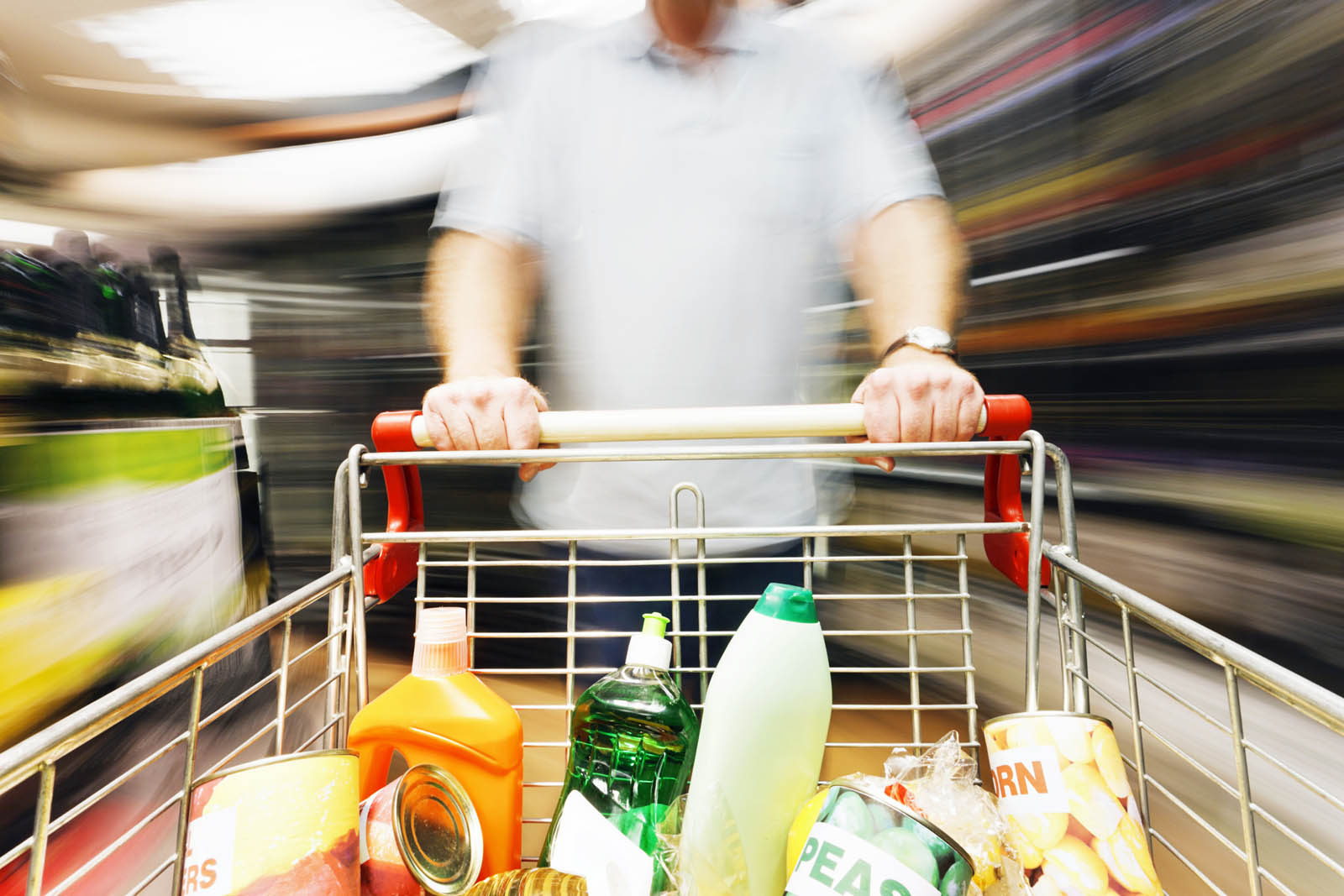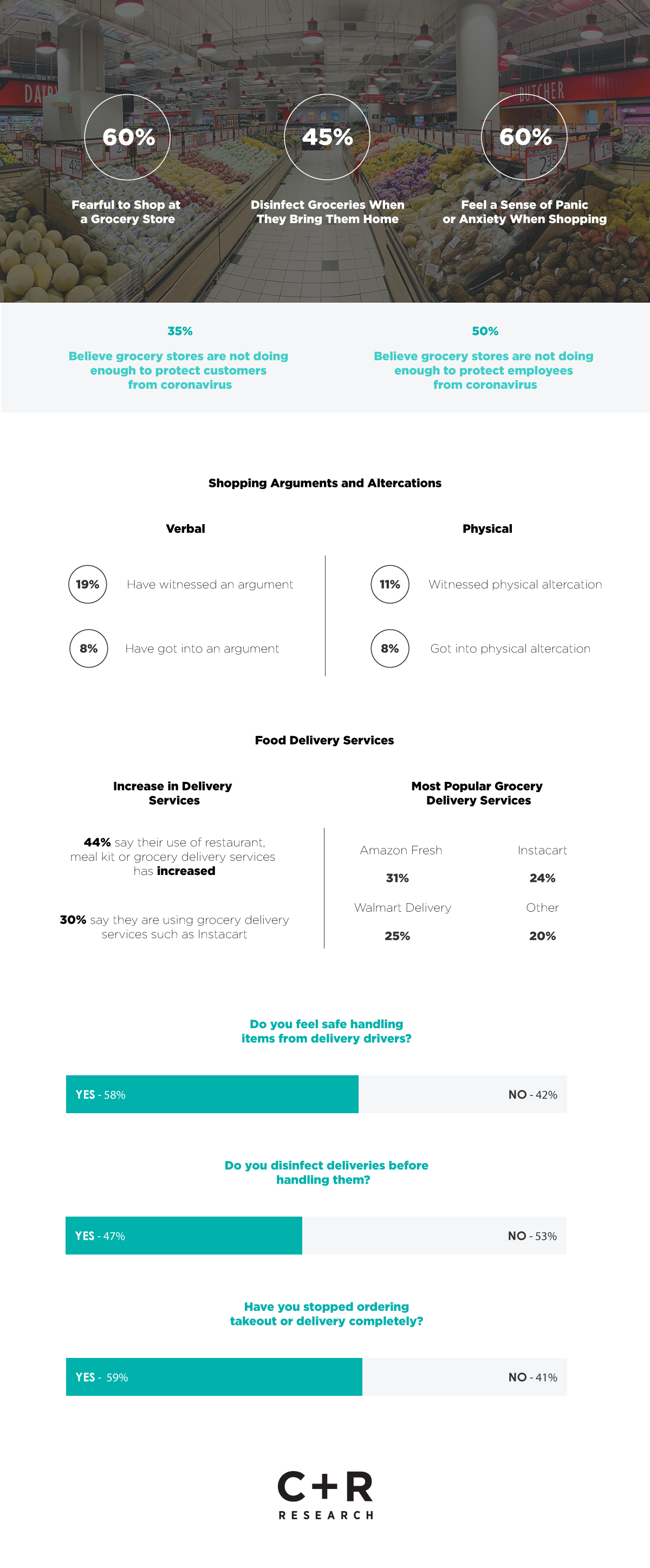
Changes in Grocery Shopping Habits During COVID-19
Filed Under: Best Practices, COVID, Market Research, Shopper, Grocery, Retail, Quantitative Research
With social distancing guidelines and shelter-in-place orders being implemented due to the COVID-19 pandemic, the way consumers shop for their groceries has changed. In order to limit contact, many are taking precautions such as ordering groceries through delivery apps or making less trips to the grocery store.
From March 27 to March 28, 2020, we asked 2,012 consumers about their grocery shopping and delivery experiences during the COVID-19 pandemic. Specifically, we asked consumers how their shopping habits, budgets, experiences, and diets have changed.

According to respondents, 73% are shopping less frequently at physical grocery stores. When shoppers do travel to a store, they’re opting to get their shopping done early. In fact, 40% of respondents said they shop for groceries in the morning while only 17% shop in the evening.
They’re also stocking up on items as 46% said the pandemic has led them to buy items in bulk. It’s interesting to note that even though many respondents say they buy in bulk, 89% believe limits should be placed on items.
And, during this time, brand loyalty has taken a backseat. Overall, 76% said they do not go out of their way to find their favorite brands. And when it comes to comparison shopping, people are basically split on looking for deals (48%) and buying “whatever is available” (52%).
Shifts in Shopping and Diet
Buying in bulk and brand loyalty are not the only changes that consumers are experiencing. About half of consumers say they are paying more for items (48%) as well as witnessing a change in their diet or eating habits (47%). Among those who have changed their eating habits, 47% are eating more processed foods; 36% are eating less produce; and 26% are eating less meat or poultry.
Delivery Services
With consumers making fewer trips to physical grocery stores, their use of delivery services has increased. According to respondents, 44% said they are using more restaurant, meal-kit or grocery delivery services and apps. Among grocery delivery apps, the most popular are Amazon Fresh (31%), Walmart Delivery (25%) and Instacart (24%). Considering the convenience factor, 27% of respondents said they plan to continue to use grocery delivery apps once the pandemic is over and life returns to a state of normalcy.

Protecting Shoppers
Not only has the COVID-19 pandemic impacted shopping habits, but it also has caused other psychological effects on consumers. According to respondents, 60% feel a sense of panic or anxiety when they shop. So, are stores doing enough to ease the minds of consumers when they shop? More than one-third of shoppers (35%) said more should be done to protect consumers from COVID-19, and 50% said grocery stores need to do more to properly protect their employees.
Taking protective measures such as limiting contact with others can help limit the spread of COVID-19, which is why it is important for both consumers and businesses to do all that they can together in order to combat the pandemic.
You can learn more about consumers’ evolving attitudes and behaviors during COVID-19 with our Consumer Roundtable discussions.
Methodology
For this report, we surveyed 2,012 self-reporting via Amazon’s Mechanical Turk survey platform from March 27 to March 28, 2020. 42% were male and 58% were female with an average age of 39. Income: Under $10K: 10%; $10-19K: 9%; $20-29K: 11%; $30-39K: 12%; $40-49K: 13%; $50-74: 22%; $75-99K: 12%; Over $100K: 11%. Note: Amazon Mechanical Turk respondents may be more likely to use Amazon services such as Amazon Fresh.
Fair Use
When using this data and research, please attribute by linking to this study and citing https://www.crresearch.com/
explore featured
Case studies
